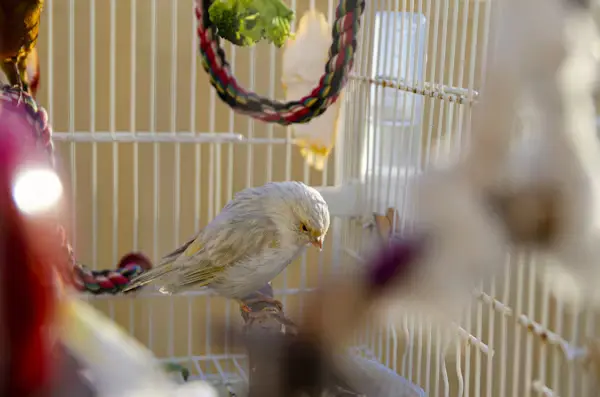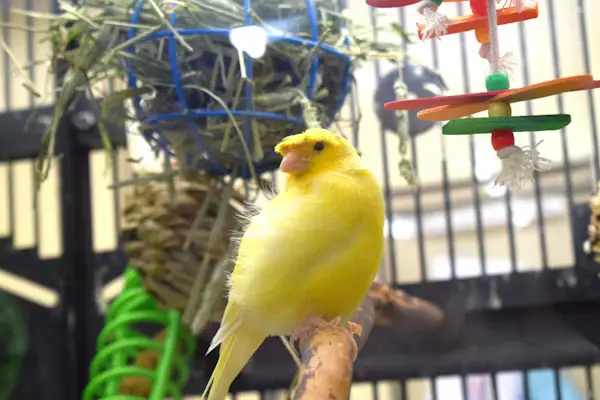Canary Bird Cage: Best Steps for the Ultimate Happy Home

Do you remember the first time you heard a canary sing? That bright, cheerful melody often evokes feelings of peace and happiness. Bringing a canary into your life is a joy, but it comes with a responsibility – providing a safe, stimulating, and comfortable home. And that starts with the right canary bird cage. Choosing the perfect cage can feel overwhelming, but don’t worry! This guide will walk you through everything you need to know, from size and accessories to cleaning and placement, ensuring your feathered friend thrives.
Table of Contents
Understanding Your Canary’s Needs
Before diving into specific cage types, it’s crucial to understand what canaries need to be happy and healthy. They aren’t just ornamental birds; they’re active creatures who require space to move, fly (even short distances), and express their natural behaviors. A cramped cage can lead to stress, feather plucking, and even health problems. If you’re considering adding a canary to your family, you might also want to read our guide on the best pet birds for beginners to ensure a canary is the right fit for your lifestyle.
What Size Canary Bird Cage Do You Need?

Determining the right canary cage size is perhaps the most important factor. Bigger is almost always better, within reason, of course. Here’s a breakdown:
- Minimum Size: 18 inches long x 12 inches wide x 18 inches high. This is the absolute minimum for a single canary.
- Recommended Size: 24 inches long x 16 inches wide x 24 inches high or larger. This allows for more flight space and enrichment opportunities.
- For Multiple Canaries: Add at least 6 inches to the length and width for each additional bird. Remember, canaries are social, but overcrowding can cause aggression.
Consider the shape too. While novelty cages look appealing, rectangular or square cages generally offer more usable space. Avoid round cages, as these can disorient your canary.
Choosing the Best Cage for Your Canary
Finding the best cage for canary depends on your preferences, budget, and the space you have available. Here’s a look at common cage types:
- Standard Flight Cages: These are the most common and often the most affordable option. They typically have horizontal bars and a removable tray for easy cleaning.
- Flight Cages with a Dome Top: These offer a bit more aesthetic appeal and can provide a sense of security for your canary.
- Corner Cages: Ideal for maximizing space, corner cages fit snugly into a room’s corner.
- Aviaries: For those with the space and multiple canaries, an aviary offers a large, communal living space.
Material Matters: Look for cages made from non-toxic materials like powder-coated steel. Avoid galvanized metal or cages with lead paint, as these can be harmful to your bird. Bar spacing is also vital; it should be no more than 1/2 inch to prevent your canary from escaping or getting its head stuck.
Essential Canary Cage Accessories

An empty cage isn’t much of a home! Enhance your canary’s environment with these essential canary cage accessories:
- Perches: Offer a variety of perch sizes, shapes, and materials (natural wood, rope, plastic) to exercise your canary’s feet and prevent arthritis.
- Food & Water Dishes: Stainless steel or ceramic dishes are hygienic and easy to clean. Position them away from perches to avoid contamination.
- Bath: Canaries love to bathe! Provide a shallow dish of clean water a few times a week.
- Toys: Rotate toys regularly to prevent boredom. Swings, bells, shreddable toys, and puzzle toys are all great options. Explore more ideas at bird cage toys.
- Mineral Block/Cuttlebone: Provides essential calcium and helps keep your canary’s beak trim.
- Cage Liner: Use paper towels or newspaper to line the cage tray for easy cleanup. Avoid using sand or corncob bedding, as these can harbor bacteria.
Canary Cage Placement: Location, Location, Location!
Where you put your canary bird cage matters significantly. Consider these factors:
- Avoid Direct Sunlight: While canaries enjoy natural light, prolonged exposure to direct sunlight can cause overheating.
- Temperature Control: Keep the cage away from drafts, air conditioning vents, and radiators. A consistent temperature between 65-75°F (18-24°C) is ideal.
- Quiet, But Not Isolated: Canaries enjoy being part of the family, but they don’t want to be in the middle of constant commotion. A quiet room with moderate activity is best.
- Eye Level: Placing the cage at your eye level promotes interaction and bonding.
- Away from Kitchen Fumes: Cooking fumes, especially from non-stick cookware, are incredibly toxic to birds.
Maintaining a Clean and Healthy Canary Cage
Regular canary cage cleaning is non-negotiable. A dirty cage can lead to bacterial growth, parasite infestations, and respiratory problems.
- Daily: Replace food and water, spot clean any droppings on perches or the cage floor.
- Weekly: Thoroughly clean the cage tray, food and water dishes, and perches with warm, soapy water.
- Monthly: Disinfect the entire cage (bars, bottom, and accessories) with a bird-safe disinfectant. Be sure to rinse thoroughly and allow it to dry completely before returning your canary.
- Vinegar Solution: A simple solution of equal parts white vinegar and water can be used for general cleaning and disinfecting.
Important Note: Never use harsh chemicals, bleach, or abrasive cleaners, as these can be toxic to your canary.
Finding a Canary Cage for Sale: What to Consider
When searching for a canary cage for sale, you’ll find a wide range of options and price points. Here’s what to keep in mind:
- Budget: Cages range from affordable plastic models to elaborate, handcrafted wrought iron designs. Set a budget before you start shopping.
- Retailers: Check pet stores, online retailers (like Amazon), and classified ads.
- Quality: Don’t sacrifice quality for price. A well-built cage will last longer and provide a safer environment for your canary.
- Reviews: Read online reviews from other canary owners to get an idea of the cage’s durability and functionality.
- Shipping: If ordering online, factor in shipping costs and ensure the cage is properly packaged to prevent damage during transit.
- Secondhand: Consider buying a used cage, but thoroughly clean and disinfect it before introducing your canary.
Troubleshooting Common Cage Issues

- Rust: If your cage develops rust, address it immediately. Remove the rust with a wire brush and apply a bird-safe sealant to prevent further corrosion.
- Bar Spacing: If the bar spacing is too wide, consider covering parts of the cage with bird netting to prevent escapes.
- Boredom: If your canary seems bored, rotate its toys, offer new foraging opportunities, and spend time interacting with it.
- Chewing: If your canary is chewing on the cage bars, provide plenty of appropriate chewing toys to redirect its behavior.
Canary Cage FAQ
Q: How often should I replace the entire cage setup?
A: A well-maintained canary bird cage can last for many years. However, if the cage becomes severely damaged, rusted, or difficult to clean, it’s time to replace it.
Q: Can I use fabric cage covers?
A: While cage covers can provide a sense of security, they can also restrict airflow and create a humid environment that promotes bacterial growth. Use them sparingly and ensure good ventilation.
Q: My canary is constantly trying to escape. What should I do?
A: Ensure the bar spacing is appropriate. Provide plenty of enrichment to keep your canary occupied and reduce its desire to escape.
Q: What is the best way to disinfect a canary bird cage?
A: A diluted bleach solution (1 part bleach to 32 parts water) can be used, but must be rinsed thoroughly multiple times to remove all traces of bleach. Vinegar and water is a safer alternative for regular disinfection.
Final Thoughts: Creating a Canary Paradise
Providing the right canary bird cage and environment is the cornerstone of responsible canary ownership. By carefully considering size, accessories, placement, and cleaning, you can create a safe, stimulating, and enriching home for your feathered companion. Remember to observe your canary’s behavior and adjust its environment as needed to ensure its health and happiness.
Now that you’re equipped with the knowledge to choose the perfect cage, we’d love to hear from you! What questions do you still have about canary cages, or what tips have worked well for you? Share your thoughts in the comments below, and don’t forget to explore more resources on Magical Pet Bird to learn even more about caring for your delightful little singer. Don’t forget to check out our article on the Red Canary Bird to learn more about this stunning variety!






